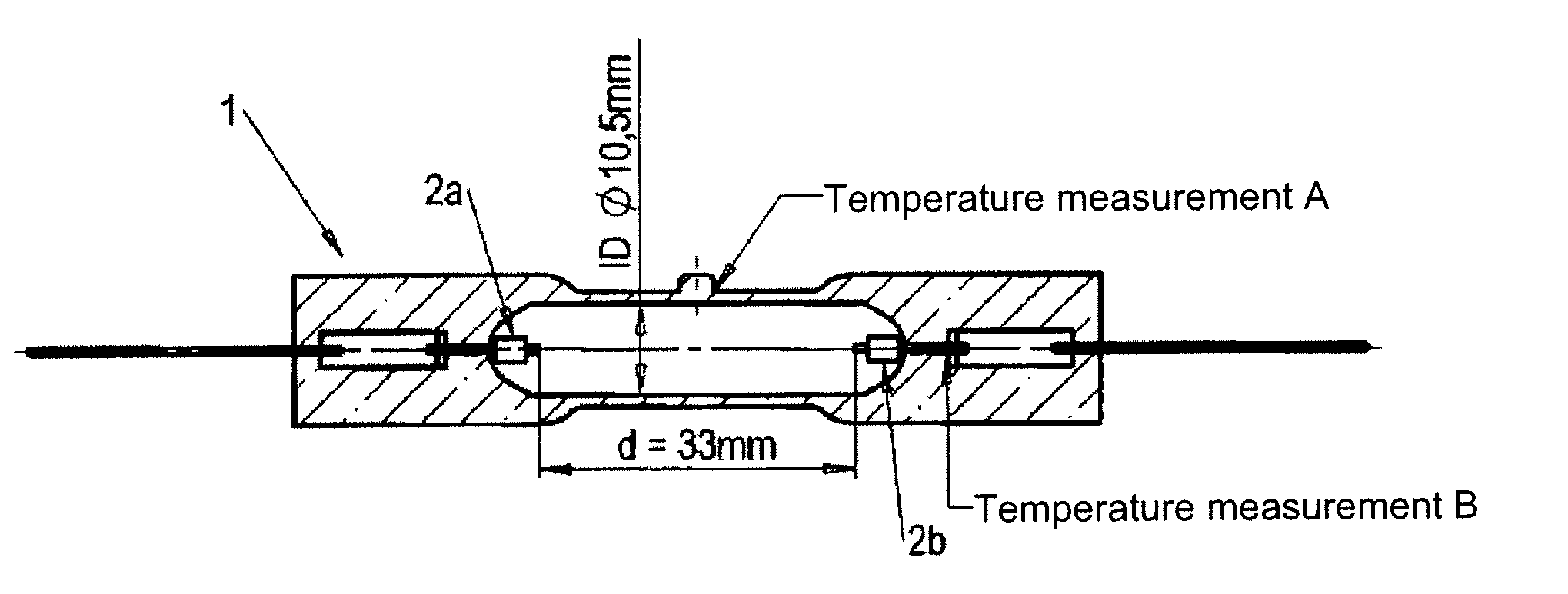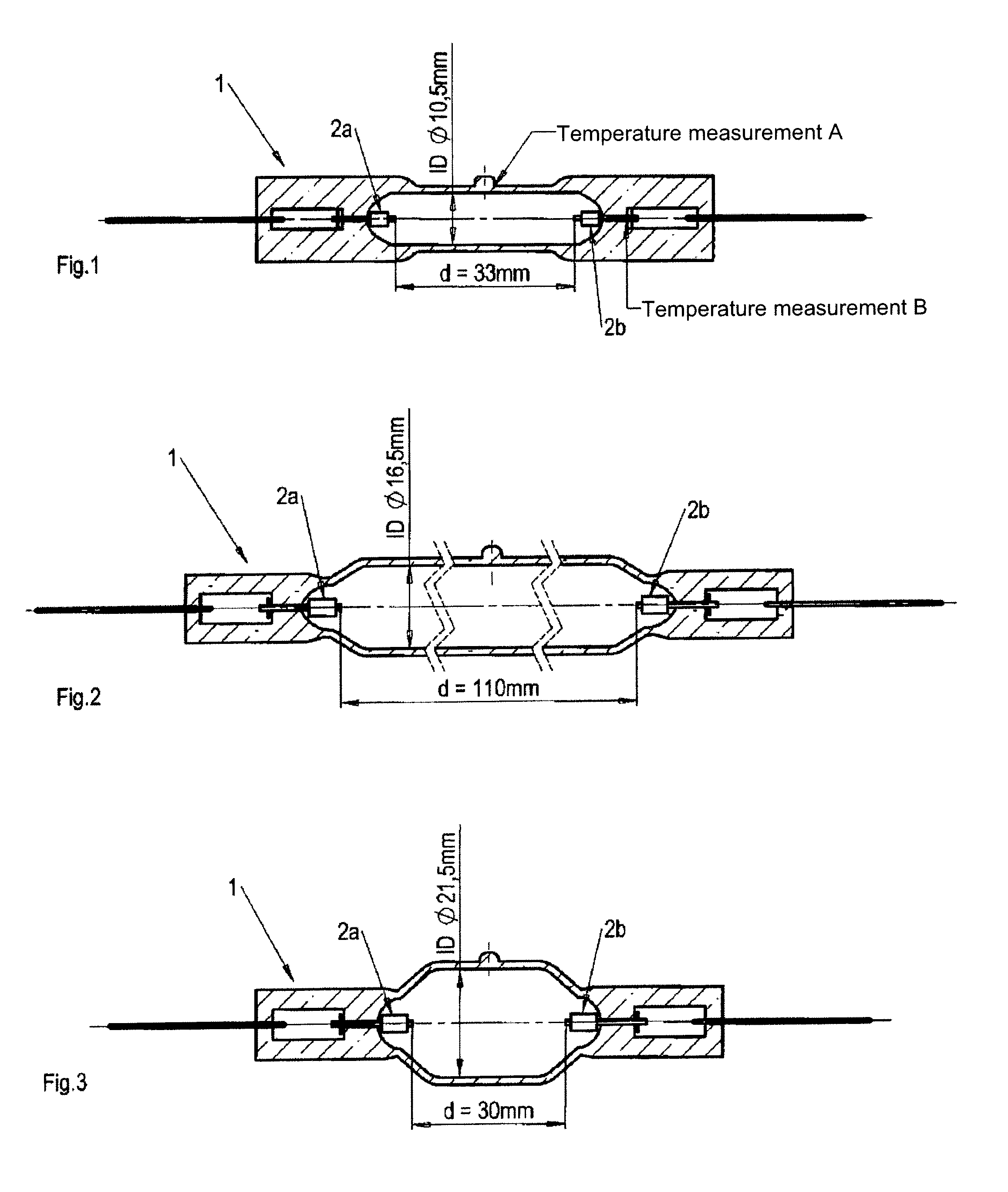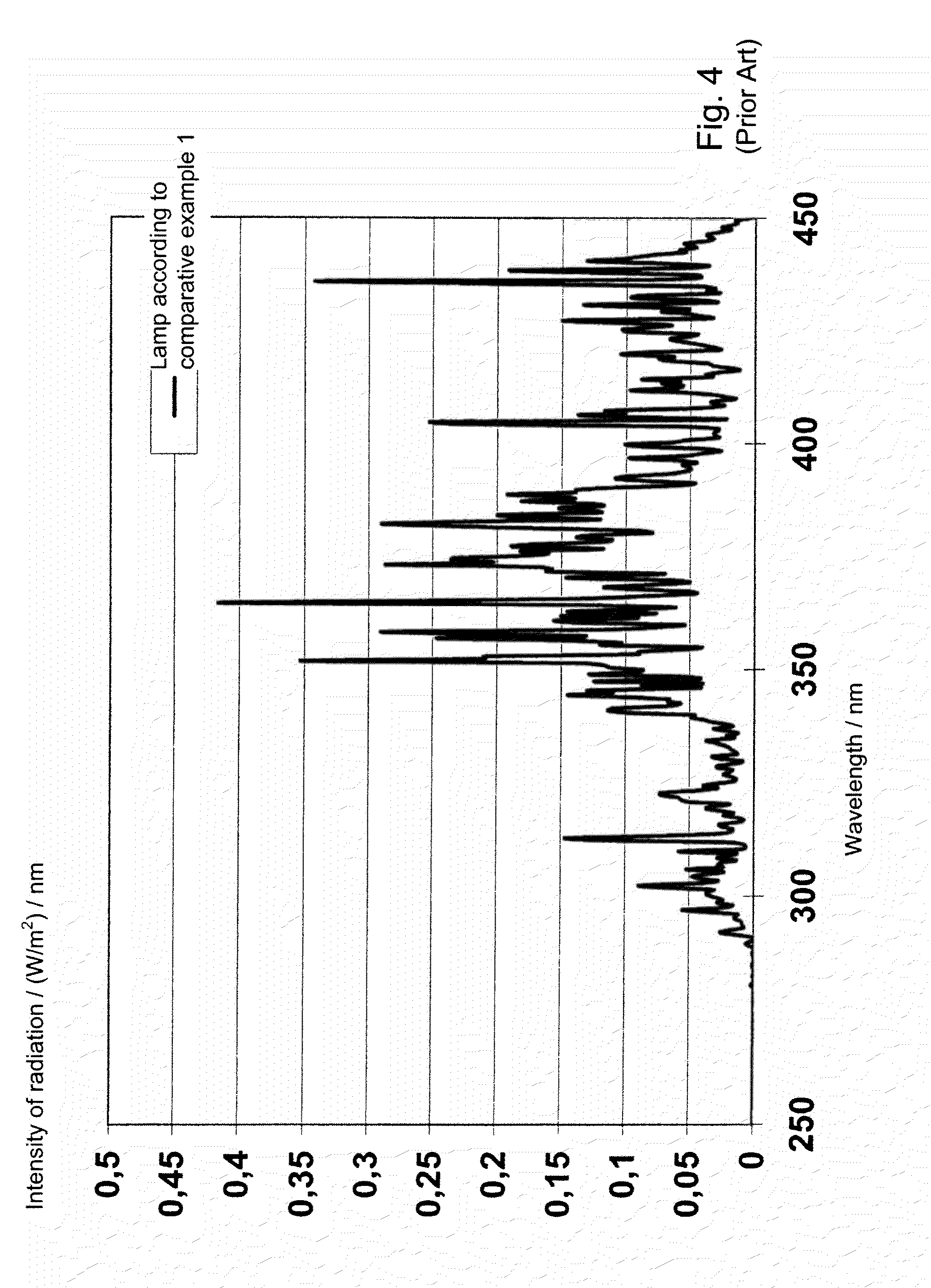Mercury-free metal halide high-pressure discharge lamp
a metal halide and high-pressure discharge technology, which is applied in the direction of electric discharge lamps, electric discharge tubes, solid cathodes, etc., can solve the problems of mercury, broken lamps, health impairments, etc., and achieve the effect of facilitating the evaporation of metallic components
- Summary
- Abstract
- Description
- Claims
- Application Information
AI Technical Summary
Benefits of technology
Problems solved by technology
Method used
Image
Examples
example 1
[0043]400 hPa of xenon, 2.0 mg of zinc iodide, 0.5 mg of zinc bromide, 0.95 mg of iron iodide and 0.02 mg of thallium iodide were filled into a discharge vessel made of quartz glass according to the one of FIG. 1. The thus obtained mercury-free discharge lamp in accordance with the invention was operated with a power of 400 W, a lamp voltage of 75 V, a lamp current of 5.35 A and a power factor of 0.99.
examples 2 to 10
[0044]Further discharge lamps in accordance with the invention were produced based on example 1. The respective lamp filling is shown in FIG. 8. The power factor was 0.99 in each case. The spectrum is shown in FIG. 5 for the lamp according to example 7.
[0045]FIG. 6 shows a comparison of the mercury-containing lamp of comparative example 1 with the lamp of example 7 in accordance with the invention, such that the spectrums of the two lamps are shown in a superimposed way.
example 11
[0047]A discharge lamp in accordance with the invention which corresponds to comparative example 3 was produced by using the discharge vessel made of quartz glass as shown in FIG. 2, such that 50 hPa of xenon, 6.0 mg of zinc bromide, 1.96 mg of iron iodide and 0.24 mg of thallium iodide were filled into the vessel. The thus obtained mercury-free discharge lamp in accordance with the invention was operated with a power of 1200 W, a lamp voltage of 103 V, a lamp current of 12.3 A and a power factor of 0.95.
PUM
 Login to View More
Login to View More Abstract
Description
Claims
Application Information
 Login to View More
Login to View More - R&D
- Intellectual Property
- Life Sciences
- Materials
- Tech Scout
- Unparalleled Data Quality
- Higher Quality Content
- 60% Fewer Hallucinations
Browse by: Latest US Patents, China's latest patents, Technical Efficacy Thesaurus, Application Domain, Technology Topic, Popular Technical Reports.
© 2025 PatSnap. All rights reserved.Legal|Privacy policy|Modern Slavery Act Transparency Statement|Sitemap|About US| Contact US: help@patsnap.com



